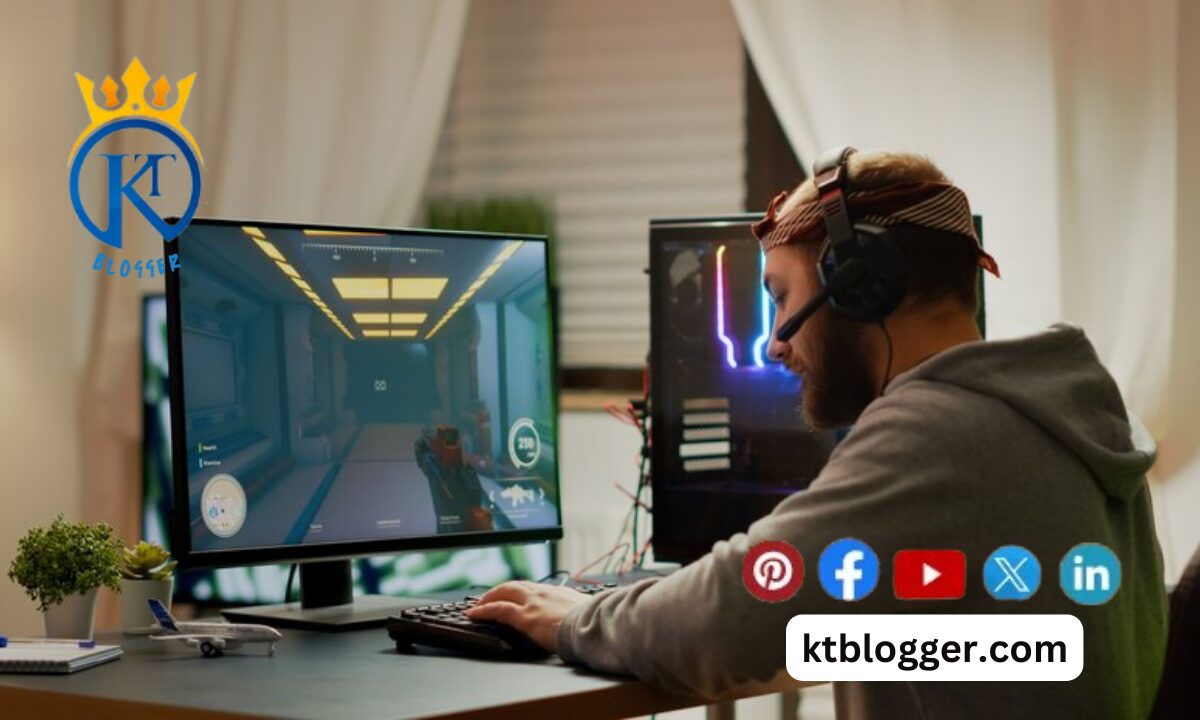Your ASUS gaming laptop is like a finely tuned machine, capable of delivering powerful gaming experiences. However, just like any high-performance device, it requires some care and attention to ensure it operates at its best.
In this guide, I’ll tell you how to update Asus gaming laptops for fast performance. From software updates to hardware upgrades, I’ll cover everything you need to know.
To enhance the performance of your Asus ROG gaming laptop in 2024, start by updating graphics drivers and optimizing Windows settings. Ensure background apps are disabled, and consider tweaking power settings for maximum efficiency. For a more advanced approach, overclocking and undervolting can further boost performance.
Additionally, upgrading RAM can significantly improve multitasking capabilities, providing a smoother gaming experience. Keep your system updated for optimal performance and speed.
Content
1. How to Update Asus Gaming Laptops For Fast Performance?
To enhance the performance of your Asus gaming laptop, consider updating the BIOS, optimizing game settings, and cleaning up unnecessary files.
Additionally, upgrading RAM and SSD can provide a significant boost. Regular maintenance, such as applying new thermal paste and using a cooling pad, ensures optimal performance. Monitor your laptop’s performance and make necessary adjustments for smoother gaming experiences.

Here are some steps you can take to update your Asus gaming laptop for faster performance:
Step 1: The Power of Updates
Regular updates are essential for keeping your laptop running smoothly and efficiently. Let’s delve into the various types of updates your ASUS gaming laptop needs:
Windows Updates: Just like your smartphone, your laptop’s operating system receives regular updates from Microsoft. These updates not only introduce new features but also fix bugs and security vulnerabilities. To check for updates, simply go to Settings > Update & Security > Windows Update, and click on “Check for updates.” Make sure to install all available updates to keep your system up-to-date.
Driver Updates: Drivers are software that allows your operating system to communicate with hardware components like your graphics card, network adapter, and more. Outdated drivers can cause performance issues and compatibility problems. To update your drivers, visit the official websites of NVIDIA or AMD for graphics drivers, and use the MyASUS app for ASUS-specific driver updates.
BIOS Update: The BIOS (Basic Input/Output System) is firmware that initializes hardware components during the boot process. Updating your BIOS can improve system stability, add new features, and enhance compatibility with new hardware. However, BIOS updates should be approached with caution, as an incorrect update can potentially render your laptop unusable. Always download the correct BIOS update for your specific laptop model from the ASUS website and follow the instructions carefully.
Step 2: Software Optimization – Fine-Tuning Your System
Optimizing your software settings can significantly improve your laptop’s performance. Here are some key areas to focus on:
Disable Startup Programs: When you start your laptop, certain programs may automatically launch in the background, consuming valuable system resources. These programs are often unnecessary and can slow down your system’s boot time. To disable startup programs, open the Task Manager (Ctrl+Shift+Esc), navigate to the Startup tab, and disable any programs you don’t need running at startup.
Adjust Power Settings: Power settings determine how your laptop manages its resources, particularly when it comes to CPU and GPU performance. To optimize for gaming, plug in your laptop and switch to the “Best performance” power plan in Settings > Power & sleep > Additional power settings. This ensures that your CPU and GPU can operate at their maximum capacity without being limited by power-saving features.
Tweak Windows Settings: Windows offers various settings that can impact system performance. For example, you can adjust visual effects to prioritize performance over visual aesthetics. To access these settings, search for “Adjust the appearance and performance of Windows” in the Start menu and explore the options available.
Game Mode: Many ASUS laptops come with a dedicated Game Mode feature, accessible through the MyASUS app or Armoury Crate. Game Mode optimizes your laptop’s settings for gaming, including CPU, GPU, and fan settings, to ensure smooth and responsive gameplay.

Step 3: Unleashing Hardware Potential (Advanced)
Upgrading your laptop’s hardware can take its performance to the next level. Here are some advanced hardware upgrades to consider:
RAM Upgrade: Random Access Memory (RAM) is essential for multitasking and running demanding applications, including games. Most modern games benefit from at least 16GB of RAM. If your laptop allows for RAM expansion, consider upgrading to improve overall system performance.
Storage Upgrade: Traditional Hard Disk Drives (HDDs) are slower than Solid State Drives (SSDs), which offer faster read and write speeds. Upgrading your storage to an SSD can significantly reduce loading times and improve system responsiveness, especially when launching games and applications.
Thermal Management: Heat is the enemy of performance. Over time, dust and debris can accumulate in your laptop’s vents, restricting airflow and causing overheating. Regularly clean your laptop vents with compressed air to prevent thermal throttling, which occurs when your CPU or GPU slows down to prevent overheating.
Step 4: In-Game Optimizations: Squeezing Every Frame
Fine-tuning in-game settings can help you achieve the perfect balance between visual quality and performance. Here’s what you need to consider:
Graphics Settings: Most games offer a range of graphical options that allow you to customize the visual experience to suit your preferences and hardware capabilities. Start with high settings and gradually lower options such as shadows, anti-aliasing, and texture filtering until you find a balance between visual fidelity and performance.
Resolution: Lowering the resolution can significantly boost frame rates, especially on lower-end hardware. Experiment with different resolutions to find the sweet spot between image quality and performance.
VSync: Vertical Sync (VSync) synchronizes your GPU’s frame output with your monitor’s refresh rate to prevent screen tearing. While VSync can improve visual consistency, it may also introduce input lag, especially in fast-paced games. Consider disabling VSync for smoother gameplay, particularly if you’re sensitive to input lag.
Step 5: Maintaining Peak Performance
To ensure your ASUS gaming laptop continues to perform at its best, follow these maintenance tips:
Regularly Clean Your Laptop: Dust and debris can accumulate inside your laptop, obstructing airflow and causing overheating. Use compressed air to blow out dust from the vents and keep your laptop running cool.
Uninstall Unneeded Software: Over time, your HP laptop may accumulate unnecessary software that consumes system resources and storage space. Regularly review your installed programs and uninstall any that you no longer need.
Monitor System Performance: Keep an eye on your laptop’s performance using built-in tools like Task Manager or third-party software. This allows you to identify any performance bottlenecks or resource-intensive processes that may be impacting your gaming experience.
Periodic Reboots: Restart your laptop regularly to clear out temporary files, reset system processes, and maintain overall system stability.
2. Advanced Tweaks and Tools: Pushing the Limits
For experienced users willing to take risks, advanced optimization techniques may provide additional performance gains.

Overclocking (CPU & GPU)
Increase performance by overclocking your CPU and GPU, but proceed with caution and proper research to avoid damaging your hardware.
Undervolting (CPU)
Reduce heat and improve stability by undervolting your CPU, but be prepared to experiment and monitor system stability.
Custom Game Profiles
Create custom game profiles to automatically optimize settings for specific titles, saving you time and effort.
FAQs
What’s The Quickest Way To Improve Performance?
The easiest way to boost performance is through software optimization. Start by updating Windows and your graphics drivers. Disable unnecessary programs that run at startup, and switch to the “Best performance” power plan. These simple steps can significantly improve responsiveness and overall speed.
How Much Is Recommended For Gaming?
For most modern games, 16GB of RAM is the sweet spot. Upgrading your RAM can improve multitasking and ensure smoother gameplay, especially in titles that demand a lot of memory. Check your laptop’s specifications to see if it allows RAM expansion.
My Laptop Gets Really Hot During Gaming. What Can I Do?
Heat buildup can throttle performance. Ensure your laptop’s vents are clean and consider using a cooling pad to improve airflow. Additionally, adjust in-game graphics settings to reduce the workload on your GPU and CPU, which can help manage heat generation.
Is Overclocking Safe For My Asus Laptop?
Overclocking can unlock significant performance gains, but it also carries risks. It’s recommended only for experienced users who understand the potential for overheating and hardware damage. Research thoroughly on your specific laptop model and consider safer alternatives like undervolting before attempting overclocking.
Summing Up
By following these steps, you’ve equipped yourself with the knowledge and tools to transform your ASUS gaming laptop into a performance powerhouse. From keeping your software up-to-date to fine-tuning settings and exploring hardware upgrades, you’ve unlocked the full potential of your machine.
Remember, optimization is an ongoing process. New games may require adjustments, and software updates can sometimes impact performance. Stay informed, experiment with settings, and enjoy the smooth, fast, and immersive gaming experience your ASUS laptop was designed to deliver.
How to Update ASUS Gaming Laptops For Fast Performance has become more than just a guide—it’s your roadmap to gaming excellence.





